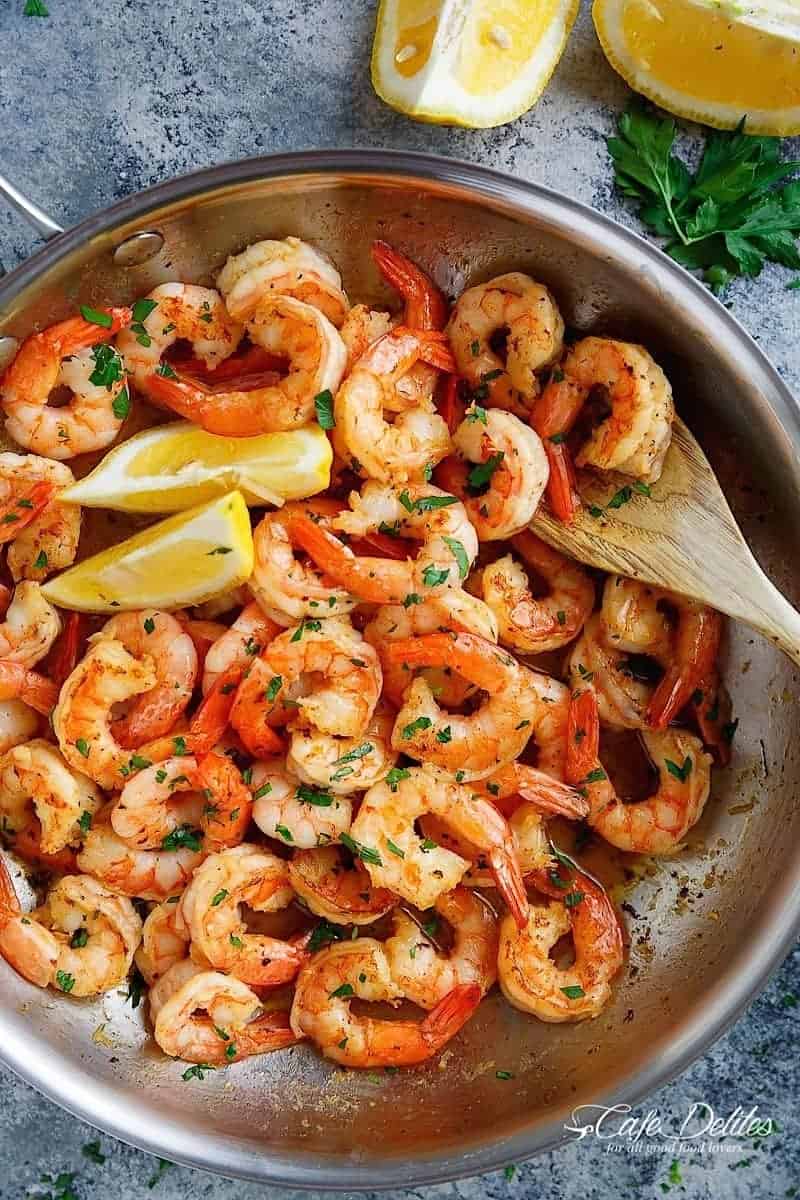4 Tips for Cooking Frozen Shrimp
Whether you’re looking to make a quick protein-filled meal or want to save money on relatively expensive seafood, frozen shrimp is often a staple in many households. While you may struggle between buying fresh or frozen shrimp, most seafood that’s available in supermarkets has been previously frozen. The fact is that you’re more likely to get a great deal on a big bag of frozen shrimp versus buying from the seafood counter.
What’s nice about frozen shrimp is that you can buy a huge bag for a reasonable price. Unlike fresh shrimp, frozen shrimp isn’t perishable and can be used to cook several meals throughout the week. Fresh shrimp must be used a few days after buying; otherwise they’re likely to go bad sitting in the refrigerator.
Unsure what to do with the bag of frozen shrimp in your freezer? We’ve got you covered! Here are four tips you’ll want to follow so that you know the ins and outs of how to cook frozen shrimp that tastes amazing!

1. Buy Quality Shrimp
Before we get to the cooking aspect of things, let’s first discuss your grocery store decisions. As with any other product on supermarket shelves, not all frozen shrimp are the same.
One of the biggest choices you have to make when buying frozen shrimp is the size. You can choose from small, medium, and jumbo. You can also choose to buy shrimp with the head and tail still on. These factors all depend on your own personal preference along with the type of meal that you’ll be making.
Other details that you’ll want to pay close attention to include:
- Farm raised or wild caught
- Country of origin
- Individually quick frozen (IQF)
Ideally you want to purchase wild shrimp that still have their shells and tails, as these both act as a shield during the freezing process. Shell-on shrimp also tend to be more flavorful and offer the texture that you’d when eating fresh shrimp.
2. Defrost Properly
The first step in cooking with frozen shrimp is to properly defrost it. Before shrimp ever hits the pan, it needs to be defrosted. The defrosting method you choose will impact the final texture.
When defrosting shrimp you want to place the shrimp in a colander or sieve and then place them in a bowl of cold tap water. Let the shrimp sit in the water for about 10 minutes. Then lift the colander out of the water, drain the existing water, add fresh water, and let the shrimp sit submerged for another 10 to 20 minutes.
Once the shrimp are completely defrosted, pat them dry before cooking them.
If you don’t have time to manually defrost your shrimp, you can always defrost tem overnight in the refrigerator. Simply put them in a covered bowl and rinse them with water before cooking.
While you may be tempted to use warm water to defrost shrimp, this causes an uneven defrost, which then causes the shrimp to cook unevenly. Because defrosted shrimp is highly perishable, you want them to stay cold up until you cook them.
You also want to avoid using the microwave. While this method will defrost your shrimp quickly, the process tends to happen too quickly. This can leave you with mushy or even semi-cooked shrimp that are overly chewy and rubbery.
3. Avoid Overcooking
Once your shrimp are defrosted, you’ll of course want to remove the shell and devein.
One of the most common mistakes in cooking frozen seafood, especially shrimp, is overcooking. Whether you’re baking, broiling, boiling, or sautéing, shrimp only need to be cooked for 2-3 minutes! Smaller shrimp may require a minute until they are ready to enjoy.
Overcooking them can make them tough and hard to chew. You’ll know your shrimp are ready to eat when the flesh changes from being opalescence to opaque.
4. Don’t be Afraid to Use Seasonings
Shrimp is one of those foods that will take on the flavor of whatever you cook them in. You can go simple by cooking your shrimp in butter, salt, and pepper, or you can add a new flavor experience by adding white wine, red pepper flakes, or any other seasoning that you enjoy.
Fresh herbs and citrus, especially lemon and ginger, go great with shrimp.
When preparing frozen shrimp, you can choose to marinate them after defrosting, or you can sprinkle on your favorite seasonings and herbs during the cooking process. If you’re looking for a lot of flavor, it’s definitely recommended to marinate the defrosted shrimp a few hours before cooking them.
Frozen shrimp are not only easy to make, they’re healthy. Shrimp are high in protein, calcium, iodine, and they pack a solid punch of good cholesterol. Whether you’re preparing shrimp scampi, coconut shrimp, or a simple shrimp cocktail, be sure to follow these tips for a great tasting dish.

